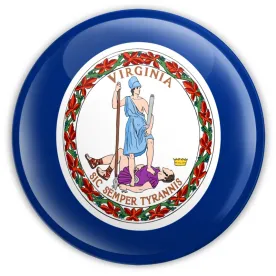On March 23, 2020, Virginia Governor Ralph Northam signed Executive Order No. 53 (EO-53), which restricts the operation of certain non-essential businesses including restaurants and recreational and entertainment businesses. The order goes into effect on March 24, 2020, at 11:59 p.m., and will remain in effect until at least 11:59 p.m. on April 23, 2020.
EO-53 expands on earlier restrictions enacted on March 17, 2020, “limiting the number of patrons in restaurants, fitness centers, and theaters to no more than 10 per establishment.”
Restaurants and Beverage Services
The order requires restaurants and other businesses that provide beverage services—such as breweries and wineries—to close dining and congregation areas. Such businesses, however, may remain open to offer delivery and take-out services.
Recreational and Entertainment Businesses
Public recreational and entertainment businesses must close their doors to the public. EO-53 lists the following businesses as recreational and entertainment businesses subject to mandatory closure:
-
Theaters, performing arts centers, concert venues, museums, and other indoor entertainment centers;
-
Fitness centers, gymnasiums, recreation centers, indoor sports facilities, and indoor exercise facilities;
-
Beauty salons, barbershops, spas, massage parlors, tanning salons, tattoo shops, and any other location where personal care or personal grooming services are performed that would not allow compliance with social distancing guidelines to remain six feet apart;
-
Racetracks and historic horse racing facilities; and
-
Bowling alleys, skating rinks, arcades, amusement parks, trampoline parks, fairs, arts and craft facilities, aquariums, zoos, escape rooms, indoor shooting ranges, public and private social clubs, and all other places of indoor public amusement.
Retail Businesses
Non-essential brick and mortar retail stores may remain open, but must limit occupancy to 10 patrons or less, maintain social distancing of at least 6 feet, and follow guidance issued by the Centers for Disease Control and Prevention (CDC) regarding enhanced sanitation practices. If any such business cannot adhere to the 10-patron limit with proper social distancing requirements, it must close.
Essential retail businesses may remain open during normal business hours. To the extent possible, these businesses also must maintain social distancing of at least six feet and follow CDC guidelines regarding enhanced sanitation practices. EO-53 defines essential retail businesses to include the following:
-
Grocery stores, pharmacies, and other retailers that sell food and beverage products or pharmacy products;
-
Medical, laboratory, and vision supply retailers;
-
Electronic retailers that sell or service cell phones, computers, tablets, and other communications technology;
-
Automotive parts, accessories, and tire retailers as well as automotive repair facilities;
-
Home improvement, hardware, building material, and building supply retailers;
-
Lawn and garden equipment retailers;
-
Beer, wine, and liquor stores;
-
Retail functions of gas stations and convenience stores;
-
Retail located within healthcare facilities;
-
Banks and other financial institutions with retail functions;
-
Pet and feed stores;
-
Printing and office supply stores; and
-
Laundromats and dry cleaners.
Professional Services and Other Non-Retail Businesses
Businesses that offer professional services may remain open, but should utilize telecommuting to the maximum extent possible. EO-53 states that “[w]here telework is not feasible, such businesses must adhere to social distancing recommendations, enhanced sanitizing practices on common surfaces, and apply the relevant workplace guidance from state and federal authorities.”
Other non-essential businesses (i.e., non-retail) are not addressed specifically in EO-53, but are required, to the extent possible, to implement social distancing recommendations, enhanced sanitizing practices, and teleworking.
The order does not limit “(a) the provision of health care or medical services; (b) access to essential services for low-income residents, such as food banks; (c) the operations of the media; (d) law enforcement agencies; or (e) the operation of government.”




 />i
/>i
